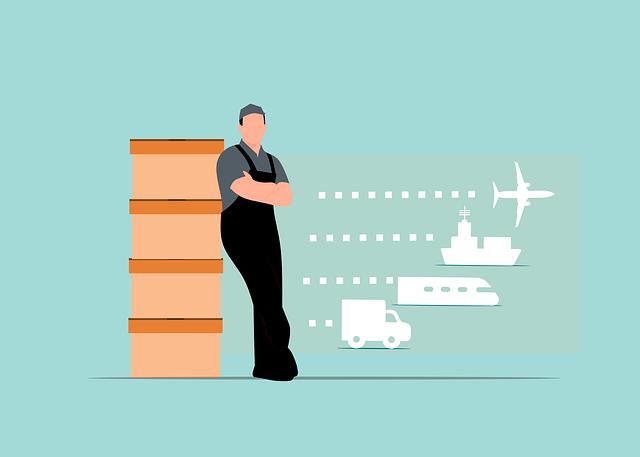Unlocking Pakistan’s Potential: A New Era in Trade and Commerce
In an age defined by globalization and swift economic transformations, Pakistan stands at a pivotal crossroads. With a rich tapestry of natural resources, a burgeoning youth population, and strategic geographical positioning, the nation is poised to harness its intrinsic capabilities and redefine its place in the global trade landscape. As we venture into a new era of trade and commerce, the possibilities are as vast as the energy and ambition of its people. This article delves into the multifaceted potential of Pakistan’s economy, exploring innovative strategies, emerging markets, and collaborative efforts that are key to unlocking a brighter and more prosperous future. Join us as we navigate the changes, challenges, and opportunities that can shape the next chapter in Pakistan’s economic journey.
Exploring Strategic Trade Partnerships for Economic Growth
In a rapidly globalizing economy, the potential for strategic trade partnerships to fuel economic growth has become increasingly significant, particularly for nations like Pakistan. By actively engaging in bilateral and multilateral trade agreements, Pakistan can enhance its market access and diversify its exports. Emphasizing collaboration can lead to the establishment of joint ventures in sectors such as technology, agriculture, and textiles, empowering local entrepreneurs to innovate and expand. Furthermore, these partnerships can facilitate the transfer of knowledge and technology, allowing for skill development and greater productivity.
Over the years, various countries have recognized the benefits of tapping into Pakistan’s rich resources and emerging market potential. To capitalize on this, it is essential to foster an environment conducive to trade, featuring reduced tariffs, streamlined customs procedures, and robust infrastructure. Increasing foreign direct investment (FDI) and creating special economic zones (SEZs) can attract businesses looking to enter the South Asian market. Here’s a brief overview of potential trade partners and their target industries:
| Country | Target Industries |
|---|---|
| China | Technology, Renewable Energy |
| Turkey | Agriculture, Textiles |
| Saudi Arabia | Energy, Construction |
| United States | IT, Pharmaceuticals |

Harnessing Technology for Enhanced Supply Chain Efficiency
In today’s fast-paced global marketplace, leveraging technology is crucial for optimizing supply chains and driving efficiency. By incorporating advanced data analytics and artificial intelligence, businesses can gain real-time insights into logistics, inventory management, and supplier performance. This enhanced visibility allows companies to make informed decisions, minimizing delays and reducing operational costs. Key technologies that are reshaping supply chain processes include:
- Blockchain: Ensures transparency and traceability in transactions.
- IoT Devices: Monitor equipment and goods in transit, providing instant updates.
- Automation: Streamlines repetitive tasks, enhancing productivity.
- Cloud Computing: Facilitates collaboration across teams and locations.
As a result, organizations can also respond more swiftly to market demands and fluctuations. For instance, by utilizing machine learning algorithms, companies can predict trends and stock levels with higher accuracy, enabling better inventory management. The integration of these technologies not only boosts operational efficiency but also enhances customer satisfaction by ensuring faster delivery and improved service quality. A summary of the potential benefits of technology in supply chain management is illustrated below:
| Benefit | Description |
|---|---|
| Increased Efficiency | Streamlined processes lead to faster turnarounds. |
| Cost Reduction | Minimizes waste and lowers operational expenses. |
| Enhanced Accuracy | Reduces errors in order fulfillment and inventory tracking. |
| Improved Collaboration | Encourages teamwork across departments and partners. |

Empowering Local Industries through Sustainable Practices
In an evolving economic landscape, local industries can thrive by embracing sustainable practices that prioritize both environmental health and economic growth. Through the integration of eco-friendly technologies and processes, businesses not only reduce their carbon footprint but also enhance their market competitiveness. Key strategies include:
- Implementing renewable energy sources like solar or wind to power operations.
- Adopting waste reduction techniques to minimize overall operational waste.
- Utilizing local raw materials to support community suppliers and reduce transportation emissions.
- Engaging in fair trade practices, which ensure all stakeholders benefit fairly from the supply chain.
Moreover, collaboration between government and private sector entities can facilitate the development of policies that encourage sustainable innovation. Workshops and training programs can equip local entrepreneurs with the necessary skills to implement these practices, transforming challenges into opportunities. A framework for supporting this transformation might look like:
| Initiative | Description |
|---|---|
| Funding for Innovation | Grants and loans tailored for sustainable technology adoption. |
| Knowledge Sharing | Establishment of platforms for sharing best practices and success stories. |
| Sustainable Certification | Programs to certify and promote businesses that meet sustainability standards. |

Navigating Regulatory Frameworks to Foster Investment Opportunities
Understanding the intricacies of regulatory frameworks is crucial for unlocking the full potential of investment opportunities in Pakistan. Investors often face a labyrinth of rules and regulations that can seem daunting, yet within this complexity lies the potential for growth and innovation. By fostering a transparent regulatory environment, the government can pave the way for both local and international investors to explore various sectors. Key strategies to enhance this landscape include:
- Simplifying Licensing Processes: Streamlined procedures can significantly reduce barriers to entry for new businesses.
- Enhancing Regulatory Clarity: Clear guidelines and consistent enforcement promote investor confidence.
- Promoting Public-Private Partnerships: Collaboration between government entities and the private sector can drive infrastructure development crucial for trade.
As regulations evolve, they can also serve as catalysts for innovation. By establishing special economic zones and offering tax incentives, policymakers can attract diverse industries, from technology to manufacturing. The impact of these tailored frameworks on the economy can be substantial, as illustrated in the table below:
| Sector | Investment Opportunity | Potential Impact |
|---|---|---|
| Technology | Tech startups | Job creation, economic diversification |
| Agriculture | Modern farming techniques | Increased productivity, food security |
| Renewable Energy | Solar and wind projects | Energy independence, sustainability |
By actively engaging in the development of these frameworks, stakeholders can ensure that the regulatory environment evolves to meet the changing needs of the market. This proactive approach not only encourages investment but also sets the stage for long-term economic resilience in Pakistan.
Closing Remarks
As we stand on the brink of a transformative phase in Pakistan’s trade and commerce landscape, the possibilities are both exciting and profound. The recent initiatives aimed at unlocking the nation’s potential promise to redefine its economic narrative, fostering connections not just regionally but globally. By harnessing technological advancements, nurturing innovation, and promoting sustainable practices, Pakistan is poised to become a pivotal player in the international market.
But this journey will require collective effort—government, businesses, and citizens alike must embrace a vision of collaboration and resilience. As we look towards the horizon, the fusion of tradition and modernity could pave the way for a prosperous future. The key lies in our ability to adapt and evolve, ensuring that every step taken not only opens new doors for economic growth but also uplifts communities and empowers the next generation.
In the spirit of progress, let us remain vigilant, curious, and open-minded, ready to seize the opportunities that lie ahead. Indeed, the potential is ripe for the taking; it is up to us to unlock it. Together, we can write a new chapter in Pakistan’s economic legacy—one marked by innovation, cooperation, and sustainable growth, illuminating the path to a brighter future for all.



